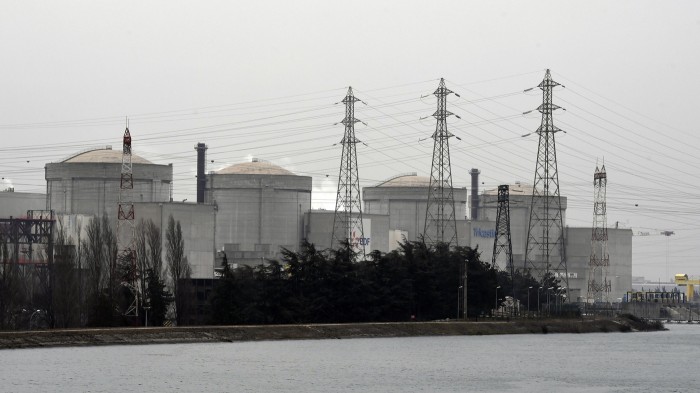Next-Generation Nuclear Power? Not Just Yet

New kinds of safer, simpler nuclear reactors are having a hard time becoming a reality—at least in certain countries.
Bloomberg reports that the nuclear industry is currently struggling to build out power production facilities that are supposed to make use of new generation III+ pressurized water uranium fission reactors. While generation III reactors have been in use since 1996, the newer "plus" versions are supposed to incorporate extra safety features and require less operator input.
Problem is, they’re proving rather tricky to actually build. Projects in France, Finland, and the U.S. are running behind schedule and over budget. And newly committed projects, such as the U.K.’s Hinkley Point, are shaping up to be eye-wateringly expensive.
What gives? According to Lake Barrett, a former official at the U.S. Nuclear Regulatory Commission who spoke to Bloomberg: “The cost overrun situation is driven by a near-perfect storm of societal risk aversion to nuclear causing ultra-restrictive regulatory requirements, construction complexity, and lack of nuclear construction experience by the industry.”
Meanwhile, China’s efforts to become the world’s largest nuclear power industry look well on track. As we’ve highlighted in the past, it’s busy building new conventional reactors, as well as investing in R&D to build more exotic kinds of next-generation hardware, such as thorium molten-salt reactors, high-temperature gas-cooled reactors, and sodium-cooled fast reactors.
Last summer, the U.S. Department of Energy announced $82 million in funding for advanced nuclear reactor research and development—not a lot of cash, to be sure, but a sign that R&D was being taken seriously. The arrival of a new president in the White House has raised the possibility of large cuts in research funding at the DOE, so the promise of future progress on new nukes in America is uncertain at best.
(Read more: Bloomberg, “The U.K. Finally Commits to Building Its Huge New Nuclear Plant,” “Fail-Safe Nuclear Power,” “U.S. Government Wants to Jump-Start Next-Generation Nuclear Reactors”)
Keep Reading
Most Popular
Large language models can do jaw-dropping things. But nobody knows exactly why.
And that's a problem. Figuring it out is one of the biggest scientific puzzles of our time and a crucial step towards controlling more powerful future models.
How scientists traced a mysterious covid case back to six toilets
When wastewater surveillance turns into a hunt for a single infected individual, the ethics get tricky.
The problem with plug-in hybrids? Their drivers.
Plug-in hybrids are often sold as a transition to EVs, but new data from Europe shows we’re still underestimating the emissions they produce.
Google DeepMind’s new generative model makes Super Mario–like games from scratch
Genie learns how to control games by watching hours and hours of video. It could help train next-gen robots too.
Stay connected
Get the latest updates from
MIT Technology Review
Discover special offers, top stories, upcoming events, and more.